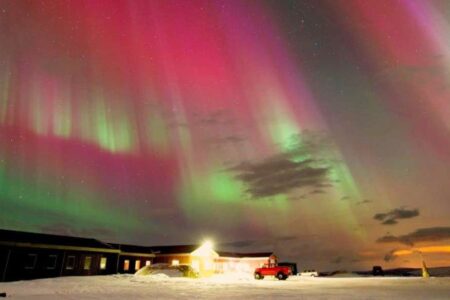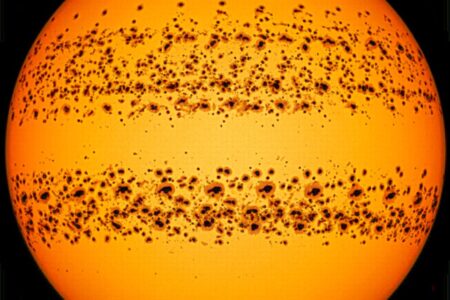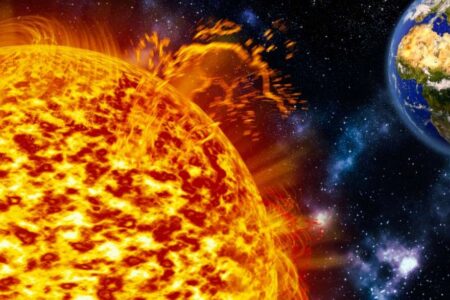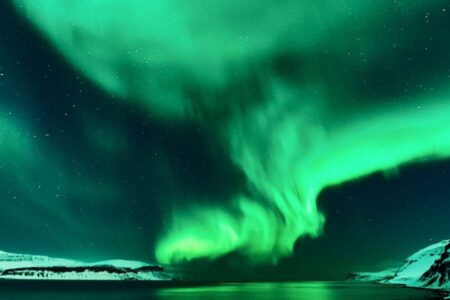Up to speed with the science of the northern lights? Well…that’s only half the story.
Long before we understood sunspots and the solar cycle, people gazed up at the dancing colours of the northern lights and saw something far more mystical.
For many, the aurora borealis had a spiritual meaning. The lights were assigned great power — as a bad open and a bringer of disaster or the earthly manifestation of ancient gods.
Today, the northern lights are still tied up with myths and legends that have been shared for centuries. And here, we take a look at a few of the aurora stories we’ve been told by locals during our time in the Arctic Circle.
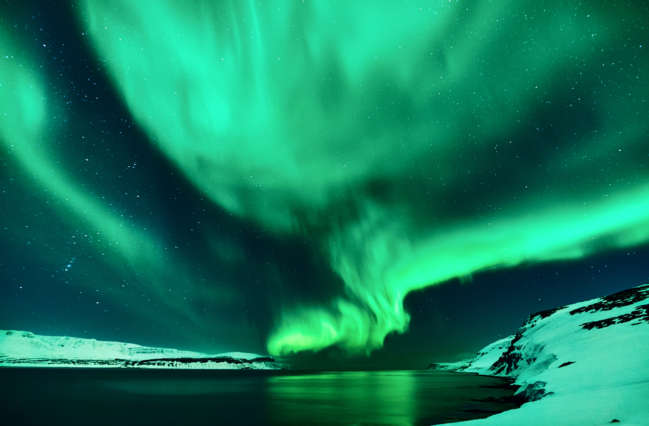
Northern lights mythology: the Sámi view of the aurora borealis
The Sámi are the indigenous peoples of northern Sweden, Norway, Finland and Russia. Traditionally, they were reindeer herders, hunters, fishermen and nomads.
They had — and still have — a great respect for nature. Their culture is based on the seasons (eight in all) and the natural rhythms of the environment.
When it came to the northern lights, however, this natural phenomenon was something to be feared rather than admired.
The Sámi believed that the aurora borealis was created as the souls of the dead danced across the sky. They thought it was unlucky to talk about the lights — and particularly dangerous to draw the attention of the spirits by whistling, singing or waving during an aurora display.
Today, some Sámi elders would still rather stay indoors when the northern lights are glowing, for fear that the spirits will carry them away — or even cut off their heads!
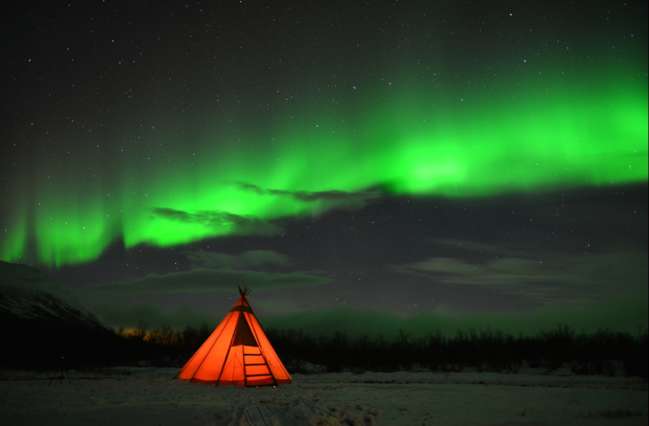
Other aurora borealis myths and legends
The Sámi weren’t the only people to create stories and spiritual meaning around the northern lights. Here are some more of our favourite aurora borealis myths and legends.
Aurora borealis myths in Sweden
Beyond the Sámi, in other parts of Sweden, the northern lights were seen as a positive omen or a gift from the gods. They signalled a bountiful harvest or a spell of good luck.
Along the coast, Swedish fishermen believed that the lights were reflections created by the scales of giant shoals of herring — and a sign of a bumper catch to come.
Northern lights mythology in Iceland
In Iceland, the lights were seen as a powerful force — sometimes good, sometimes malevolent, depending on the tales you heard.
Pregnant women were told not to look at the northern lights while they gave birth lest their child be born cross-eyed. Yet the lights were also thought to ease labour pains and bestow a life of good fortune on the newborn.
A theme of good luck ran through other superstitions, too. Those about to depart on a journey or get married felt blessed if the aurora was dancing above.
Other Icelandic legends imagined the aurora as the restless spirits of the dead, wandering the skies in search of their final resting place.
And some stories — a little lighter in tone — claimed the lights appeared when Iceland’s hidden folk, the elves, threw secret celebrations under the stars.
Northern lights myths in Finland
In Finland, the name for the Northern Lights is revontulet, which literally translates as fire fox. The name comes from the rather beautiful myth that Arctic foxes produced the aurora borealis.
These fire foxes would run so fast that when their large, furry tails brushed against the mountains, they created sparks that lit up the heavens.
In another version, as the fire foxes ran, their tails swept snowflakes up into the sky, where they reflected the light of the moon and hung shimmering above.
Aurora legends in Norse mythology
In Norse mythology, the northern lights were the stuff of epic tales.
Some believed the aurora was the breath of brave soldiers who had died in combat. Or reflections from the shields of the Valkyries — powerful female warriors who guided the souls of fallen Viking warriors to Valhalla.
Others saw the northern lights as the Bifrost Bridge — a glowing pathway that connected the world of the living to the world of the gods.
And while some communities in Norway revered the lights, others feared them. Some legends warned of the lights reaching down to snatch the unwary. So people developed rituals and superstitions to protect themselves.
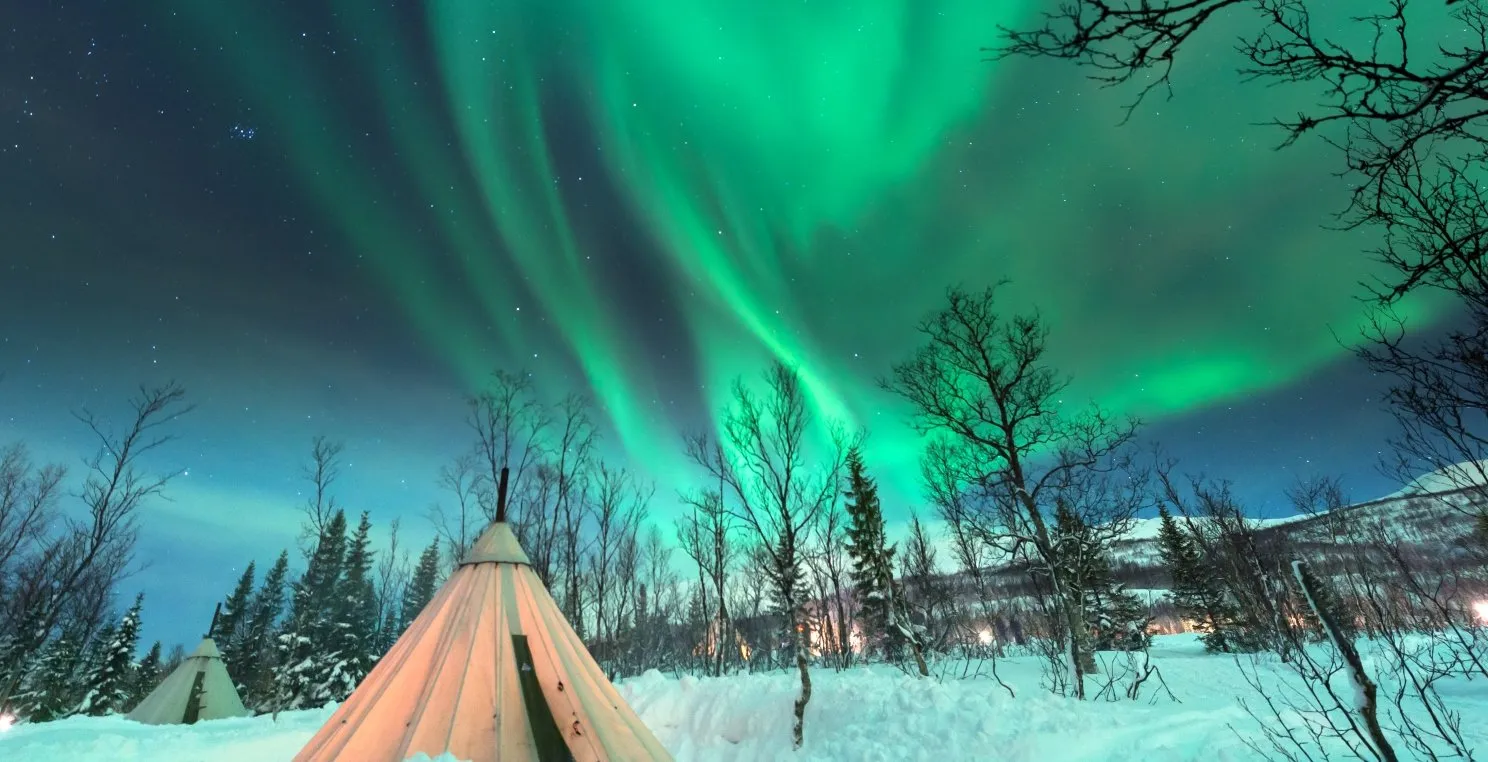
Experience the myth and the magic on an aurora borealis holiday
Whether seen as a gift or a warning, a guide or a ghost, the aurora borealis has always held meaning far beyond the realms of science.
That wonder lives on — in Sámi culture, in northern lights myths and legends and in the imaginations of aurora hunters travelling north.
Want to see the aurora lights for yourself?
On a holiday to see the northern lights, you can travel to the Arctic wilderness and embark on exciting aurora excursions with an expert guide.
You can also get to know traditional Sámi culture — by visiting a Sámi village or reindeer farm and learning about their history and way of life.
Start planning your journey today. Take a look at our aurora borealis holidays to Sweden, Norway, Finland and Iceland. Or get in touch with the Aurora Nights team to plan a tailor-made aurora tour.
